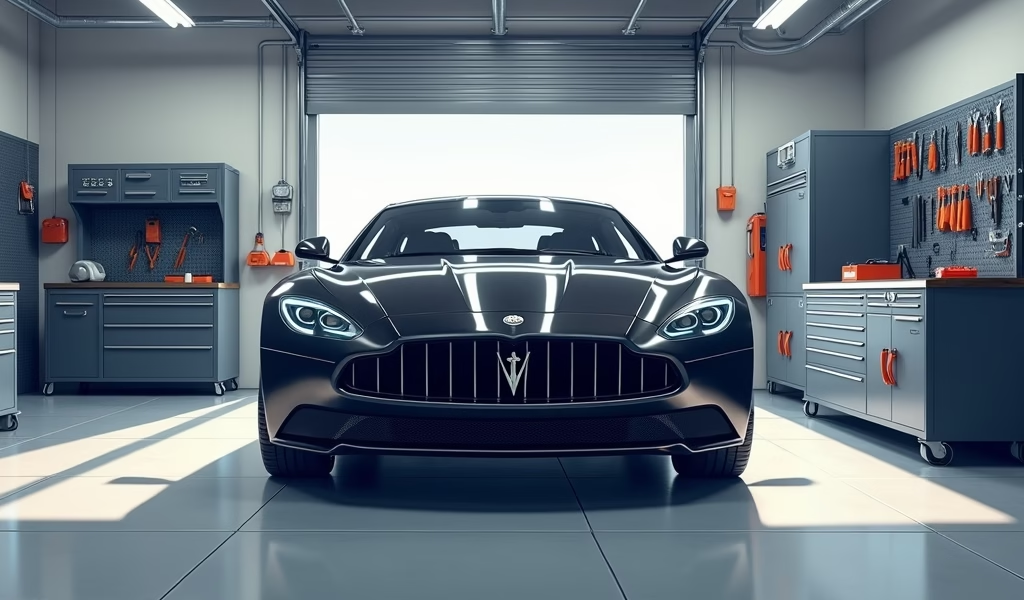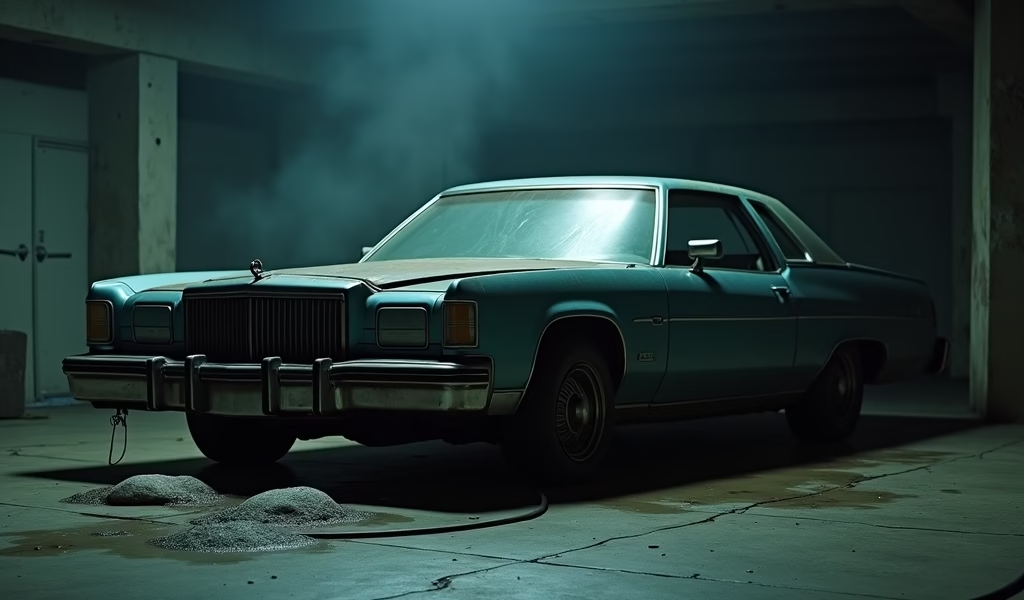Overview
This article outlines five essential strategies for dealerships to maximize used vehicle inventory value: implementing regular maintenance schedules, investing in professional detailing, rotating inventory strategically, maintaining thorough documentation, and utilizing digital management tools. These practices not only preserve vehicle condition but also build customer trust, increase sales potential, and ultimately enhance dealership profitability.
Table of Contents
- Introduction: The Value of Proper Used Vehicle Inventory Management
- 1. Implement Regular Maintenance Schedules
- 2. Professional Detailing: More Than Just Appearances
- 3. Strategic Inventory Rotation and Display
- 4. Thorough Inspection and Documentation
- 5. Leveraging Digital Inventory Management Tools
- Conclusion: Maximizing Your Dealership’s Potential
- Frequently Asked Questions
Introduction: The Value of Proper Used Vehicle Inventory Management
In the competitive world of automotive sales, your used vehicle inventory represents both significant investment and potential profit. As someone who’s spent 25 years under the hood before managing dealership operations, I’ve seen firsthand how proper inventory care directly impacts bottom lines. It’s not just about having cars on the lot—it’s about maintaining vehicles that inspire confidence and command top dollar.
Many dealerships focus exclusively on acquisition and turnover rates while overlooking what happens in between: the critical care period when vehicles sit on your lot. This oversight can cost thousands in diminished value and missed sales opportunities. The average used car spends 38 days on a dealership lot, according to Cox Automotive’s market research, making proper inventory maintenance not just important but essential.
Today, I’m sharing five professional-grade care tips that will help protect your investment, enhance vehicle presentation, and ultimately drive more sales. These aren’t just theoretical concepts—they’re battle-tested strategies I’ve implemented across multiple dealerships with consistent results.
1. Implement Regular Maintenance Schedules
Sitting vehicles develop problems active ones don’t. That’s why establishing a consistent maintenance routine for your used vehicle inventory is critical for preserving both mechanical integrity and value.
Start with a weekly “wake-up” program. Vehicles should be started and run to operating temperature at least once every seven days. This simple practice keeps fluids circulating, prevents gaskets from drying out, and maintains battery charge. Have your team drive each vehicle at least 100 feet to prevent flat spots on tires and keep brake components from seizing.
For longer-term inventory (over 30 days), implement this expanded maintenance checklist:
- Check all fluid levels monthly and top off as needed
- Inspect tire pressure every two weeks (temperature changes affect pressure)
- Test batteries with a load tester monthly (vehicles can drain batteries even when off)
- Cycle the air conditioning system weekly in summer months
- Run windshield wipers and washer fluid periodically
A particularly effective strategy I’ve implemented is assigning specific vehicles to sales staff for their “maintenance day” duties. This not only ensures the work gets done but also familiarizes your team with each vehicle’s features and condition—valuable knowledge when speaking with potential buyers.
“The most expensive maintenance is the maintenance you skip,” was my old shop foreman’s favorite saying. When a $2 fuel stabilizer can prevent a $800 fuel system cleaning, the math makes itself clear.
2. Professional Detailing: More Than Just Appearances

Professional detailing isn’t just about making cars shine—it’s preventative maintenance that protects your investment. Most dealerships with used cars detail vehicles once upon intake, then let them collect dust until sale. This approach leaves money on the table.
Instead, implement a rotating detail schedule based on environmental conditions and inventory age. Vehicles in high-pollution areas or those parked under trees require more frequent attention. Here’s a practical schedule that balances cost with protection:
- Initial intake: Complete exterior and interior detail with paint protection
- Every 14 days: Basic wash and interior dust/vacuum
- Every 30 days: Full exterior wash, wheel cleaning, and interior refresh
- Every 60-90 days: Complete re-detail if still in inventory
One often overlooked aspect of detailing is protective treatments. UV protectant on dashboards and trim prevents cracking and fading. Leather conditioner keeps seats supple and prevents drying. Fabric protection on cloth interiors pays for itself the first time a potential buyer spills coffee during a test drive.
For high-value inventory, consider ceramic coating applications. While more expensive upfront, these treatments provide 6-12 months of protection, maintain paint gloss, and make regular cleaning significantly easier. The ROI becomes clear when these vehicles command premium prices and turn faster than competitors’ inventory.
I’ve worked with dealerships that saw average front-end profits increase by $340 per unit after implementing comprehensive detailing programs. As research from Autotrader shows, 84% of car shoppers are willing to pay more for a meticulously clean vehicle—they associate cleanliness with better mechanical condition.
3. Strategic Inventory Rotation and Display
Ever notice how grocery stores constantly move products around? They understand that freshness sells and that environmental factors affect product quality differently across their floor space. Your used vehicle inventory deserves the same strategic thinking.
Implement a bi-weekly rotation system that moves vehicles to different lot positions. This practice serves multiple purposes: it prevents uneven sun exposure and weathering, gives every vehicle time in high-visibility locations, and creates the impression of fresh inventory for repeat visitors.
When planning your rotation strategy, consider these environmental factors:
- Sun exposure: Vehicles with vulnerable interiors should avoid southern exposures
- Water drainage: Some lot areas may collect standing water after rain
- Tree proximity: Fall leaves and sap can quickly damage paint
- Traffic patterns: Track which areas get the most foot traffic
One effective rotation system I’ve implemented divides inventory into four quadrants based on age: 0-15 days, 16-30 days, 31-45 days, and 46+ days. The newest inventory gets prime positioning, while aging inventory rotates through all zones to maintain exposure. This system also helps visually identify aging inventory that may need pricing adjustments.
Don’t overlook the power of strategic grouping. Organize similar vehicles together to facilitate comparison shopping. A customer interested in midsize SUVs appreciates seeing options side-by-side rather than scattered across your lot. This approach not only improves customer experience but increases the likelihood of making a sale even if their first-choice vehicle isn’t quite right.
The effort of moving vehicles pays additional dividends: it ensures every vehicle gets started regularly, staff becomes familiar with your entire inventory, and you’ll catch developing issues before they become serious problems.
4. Thorough Inspection and Documentation
The days of “as-is” sales with minimal documentation are fading fast. Today’s buyers are more informed and more cautious than ever before. A comprehensive inspection and documentation system builds trust with potential buyers while protecting your dealership from future complaints.
Start by implementing a standardized 150+ point inspection for every vehicle at intake. This isn’t just paperwork—it’s a value-building tool. When a customer can see documented proof that you’ve thoroughly checked their potential purchase, their confidence increases dramatically.
Your inspection process should include:
- Complete mechanical assessment (engine, transmission, brakes, steering)
- Electrical system testing (including all accessories and features)
- Undercarriage inspection (suspension, exhaust, fluid leaks)
- Body condition documentation (with photos of any damage)
- Road test results and notes
Beyond the initial inspection, implement a system for ongoing condition monitoring. Each time a vehicle is moved, serviced, or detailed, staff should note any changes in condition. This creates a continuous record that protects both buyer and seller.
Make this documentation work for you by creating customer-facing vehicle history portfolios. Include the inspection report, service records, CARFAX or similar reports, and before/after photos of any reconditioning work. Place these in the vehicle during showings to demonstrate transparency and attention to detail.
One dealership I consulted with increased their average gross profit by 12% simply by implementing detailed documentation packages and making them part of their sales process. Customers were willing to pay more because they felt more confident in what they were buying from a used car for sale listing that included comprehensive documentation.
Remember, documentation isn’t just about sales—it’s risk management. In the event of a customer dispute after purchase, detailed records of the vehicle’s condition at sale provide invaluable protection for your dealership.
5. Leveraging Digital Inventory Management Tools

The pen-and-paper days of inventory management are long gone. Today’s successful dealerships leverage digital tools to track, maintain, and market their used vehicle inventory more effectively than ever before.
Start with a robust Dealer Management System (DMS) that integrates inventory tracking with your maintenance schedules and marketing platforms. The right system allows you to:
- Track aging inventory with automated alerts
- Schedule and document regular maintenance
- Monitor reconditioning costs against expected returns
- Generate customer-facing window stickers with QR codes linking to detailed vehicle information
- Analyze performance metrics to identify trends in inventory turnover
High-quality photography and virtual tours have become non-negotiable in today’s market. Invest in consistent, professional-grade imaging for your entire inventory. Each vehicle should have 30+ high-resolution images showing exterior, interior, under-hood, and any unique features. Consider adding 360-degree virtual tours for premium inventory.
According to V12’s automotive consumer research, 96% of car shoppers research vehicles online before visiting dealerships. Your digital presence must accurately represent your physical inventory’s condition and value.
One particularly effective digital tool is inventory age tracking with automated pricing adjustments. Configure your system to flag vehicles at specific age thresholds (30, 45, 60 days) and recommend price adjustments based on market data and carrying costs. This prevents the common mistake of holding aging inventory at unrealistic prices while costs mount.
For multi-location dealerships, digital inventory management enables virtual inventory sharing—customers at one location can see and purchase vehicles from your entire network, dramatically increasing selection without increased carrying costs.
Remember that even the best digital tools require human oversight. Schedule weekly inventory review meetings where your team analyzes system reports, discusses aging inventory, and makes strategic decisions about reconditioning, pricing, and marketing focus.
Conclusion: Maximizing Your Dealership’s Potential
Proper used vehicle inventory management isn’t just about maintaining cars—it’s about maintaining your dealership’s reputation and profitability. By implementing these five professional care tips, you’re not just protecting your investment; you’re setting the stage for faster turns, higher margins, and more satisfied customers.
Remember that consistency is key. The most effective inventory management systems are those followed religiously, regardless of market conditions or temporary pressures. Build these practices into your dealership’s DNA, and you’ll see the results in your bottom line.
Start by assessing your current practices against each of these five areas. Identify your strongest and weakest points, then develop an implementation plan that addresses the most significant gaps first. Even incremental improvements can yield substantial results.
Your used vehicle inventory represents both significant investment and potential profit. By treating each vehicle as an asset worthy of professional care and attention, you position your dealership for success in an increasingly competitive marketplace.
The extra effort in maintenance, detailing, rotation, documentation, and digital management pays dividends not just in higher sale prices but in reputation—the most valuable asset any dealership can possess.
Frequently Asked Questions
How often should used vehicles be started while in inventory?
Vehicles should be started and run to operating temperature at least once weekly. This practice keeps fluids circulating and prevents batteries from draining.
What’s the optimal frequency for detailing used inventory?
Complete an initial detail at intake, basic cleaning every two weeks, and a refresh detail monthly. Vehicles in inventory over 60 days should receive another complete detail.
How does inventory rotation impact vehicle condition?
Regular rotation prevents uneven sun exposure, tire flat-spotting, and battery drain. It also ensures vehicles get equal exposure in high-visibility areas, potentially increasing sales opportunities.
What documentation should dealerships maintain for used inventory?
Maintain comprehensive inspection reports, reconditioning records, service history, and condition photographs. This documentation builds buyer confidence and provides liability protection.
How much can proper inventory management increase profit margins?
Dealerships implementing comprehensive inventory management systems typically see front-end profits increase by $200-500 per unit. These gains come from improved vehicle condition, faster inventory turns, and increased customer confidence.


Pingback: 2023 cars for sale: 7 Pro Car Care Hacks - knowsyourcar.com